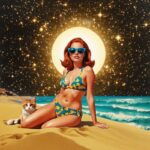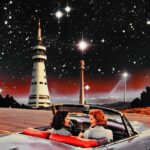What are the aspects meaning in astrology? In this post I will describe the significance of the major Ptolemic aspects used in traditional astrology. (Plus one!) However, In my practice I integrate the Huber method which does include the quincunx (An aspect added by Johannes Kepler). The link is an affiliate one, but I have this book and I highly recommend it.
I have not included other aspects like the quintile, novile, septile and sesquiquadrate because it would totally mess up the sacred geometry of the Huber approach. The Ptolemic aspects listed below (Minus the quincunx) are the gold standard in terms of aspect pattern astrology.
Major Planetary Aspects Meaning
The Conjunction – 360 divided by 1
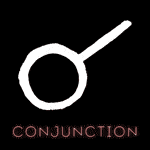
A perfect conjunction is 0º of separation. This aspects meaning is not inherently good or bad. It all depends on the planets involved. The two merge into one being, so it helps if the two planets get on. The Moon and Mars would work as a hard aspect, whereas the Moon and Venus would work as a soft aspect. Planets in conjunction cannot see each other.
A person with Sun Uranus will wonder why everyone else thinks they are insane when they see themselves as quite normal and conventional. Conjunctions are very obvious in a chart, especially when they apply to personal planets or angles. They will be the number one hot spot in the chart and often the first thing most astrologers will talk about.
Conjunctions are similar to Ascendant energy. They are ambitious and work together towards a common goal. The planets both have to walk in sync with each other to go forward, however. They are focused and single-minded.
In some of my planetary aspect posts have grouped my aspects into “soft” and “hard”. In doing so, I have put the conjunction together with the quincunx to save space. At first, it might seem strange that the quincunx should have anything to do with the conjunction, but we must remember that traditional astrologers didn’t even regard the conjunction as an aspect since it cannot ‘see’ the planet next to it.
The quincunx is also known as the inconjunct since the planet has no mode, sex or element in common with the sign it aspects. The quincunx cannot ‘see’ the other planet, and they have absolutely no common ground at all. I’m not saying that these two aspects play out the same, but there is still a kind of blindness common to them both. With the conjunction, on the other hand, the planets are blended. So the planets do not see each other, not because they have nothing in common, but because they think they are one and the same.
Aspect Patterns: The Stellium.
The Opposition – 360 divided by 2

A perfect opposition is 180º of separation. Some confrontation will be inevitable with the opposition, but it doesn’t always work as a tricky aspect. All it means is the two opposing planets need to find some balance. You cannot be in two places at once, so this is all about co-operation and compromise.
This aspects meaning is somewhat like the descendant energy. People with a tight opposition need to learn not to focus too much on one side of it. Again it works better if one of the planets compliments the other. Having a common interest also allows them to meet halfway.
Jupiter opposition Neptune could share a passion for spirituality or travel, for example. Otherwise, oppositions tend to swing from one side to the other and feel a little bi-polar. Transits can show which end is taking the reins. Like with the Descendant, if we act out one side of an opposition, we may project the other side onto a partner. Just as the Descendant can also show our open enemies, one side of the opposition may also reveal our shadow.
Aspect Patterns: Kite, T Square, Mystic Rectangle, Rack.
The Trine – 360 divided by 3

A perfect trine is 120º of separation. This aspects meaning shows the line of least resistance. Yes, a trine is harmonious and easy to handle by transit or as a natal aspect. However, it doesn’t DO anything… We use our trines after pushing ourselves too hard and need to do something to unwind.
Usually, trines inspire our natural gifts. They bring out the best in the fiery planets. So a Mars trine Jupiter is more likely to be put to better use than a Neptune trine Venus. Trines are our talents, but we might not even realise they are there because we find them so easy. There is no urgency with them. There is nothing to prove. Trines act best when easing a stressful aspect pattern, like if that trine plugs into a grand cross.
A good example of a negative trine could be a triangular situation. For example, when a mistress unwittingly props up an ailing marriage by being the third party. A trine in that situation will maintain the status quo for better or worst. Trine are not a force for change and they don’t like to rock the boat. So the dark side of a trine is that it could work like an enabler and facilitate an undesirable situation.
Aspect Patterns: The Grand Trine, Kite, Mystic Rectangle, Minor Grand Trine.
The Square – 360 divided by 4

A perfect square is 90º of separation. Planets in a square are very much aware of each other, unlike the opposition. They are constantly getting in each other’s way. Some Astrologers see this aspects meaning as the planets working at cross purposes with each other, but I think it is more like the square won’t let you brush anything under the carpet.
Squares spur you on to work your hardest and make you see things from every possible view. They force you out of your comfort zone and to face the unpleasant truth. They are not a holiday in the Sun, no, but boy do they make you grow.
Squares are Martian; they are tough-love and tough-tittie. They do get easier with age. Squares are associated with the number four, matter and manifestation. The square does indeed induce some fear, but this fuels a kind of fight or flight response. The muscles tense up and produce action.
Without squares in our natal chart or squares by transits, we would achieve nothing. The negative side is when the square energy does not take the rest it needs, the stress builds up to dangerous levels and becomes destructive rather than constructive. When we work on our squares is they become diamonds!
Aspect Patterns: Grand Cross, T-Square, The Fist of God (Sesquiqudrate or Thor’s Hammer).
Sextile – 360 divided by 6
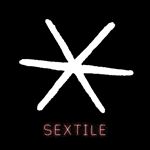
A perfect sextile is 60º of separation. This aspects meaning has less of the ease that the trine has. Six is a Venus number. It hasn’t quite got the established gravitas of trine but seems to have beginners luck. The sextile is the flowering rather than the fruit.
Again we always look at the planets. If a chart has lots of squares, a sextile will not be enough to calm things down. It will add a giggle and a tease, but people can also take sextile jokes the wrong way.
If the planets get along, then they will banter with each other quite easily. The sextile can form an adorable creative combo, plus it loses the often self-satisfaction of the trine. The sextile has more “oomph” factor contained within it. The spicy sextile builds a helpful bridge between planets and has an opportunist vibe. The planets actively encourage each other to be themselves. The advantage of the sextile is that unlike the Trine it will not fall asleep due to its innate ‘fizzy’ energy.
Aspect Patterns: The Star Of David, Minor Grand Trine, The Yod.
Quincunx – 360 divided by 12
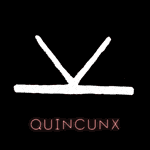
A perfect conjunction is 150º of separation. This aspects meaning continues the story of the 3 (Trine), 6 (Sextile), 12 (Quincunx). So really, the quincunx should be counted as a soft aspect. But as you see with the 1 (Conjunction), 2 (Opposition), 4 (Square), life gets more complex as we age. Each turn of the wheel accumulates more baggage and karma.
The quincunx is simply a reflection of that evolution, so its meaning is ambiguous. The enigmatic quality of the quincunx derives from the fact it will not share any element, gender or mode with the planet it aspects. Planets in quincunx do not see each other at all! Like they don’t even register on each other’s radar.
Therefore the danger of the quincunx is in its passive-aggressive quality. A niggling friction inside that you can’t quite figure out. Once you do work it out, then the quincunx can become very powerful indeed. On the positive side, the quincunx works like dissonance in music. It is getting two unlikely items working unexpectedly well together, like a jam and cheese sandwich.
The quincunx is a sophisticated resolution of differences. It’s also alchemical, almost miraculous because it brings together a kind of harmony where you wouldn’t expect to find it. The quincunx is also known as a karmic aspect and could be why it appears so often in synastry. Time resolves the internal irritation of the quincunx. The key is patience. Eventually, the grit in the seashell makes pearls!



